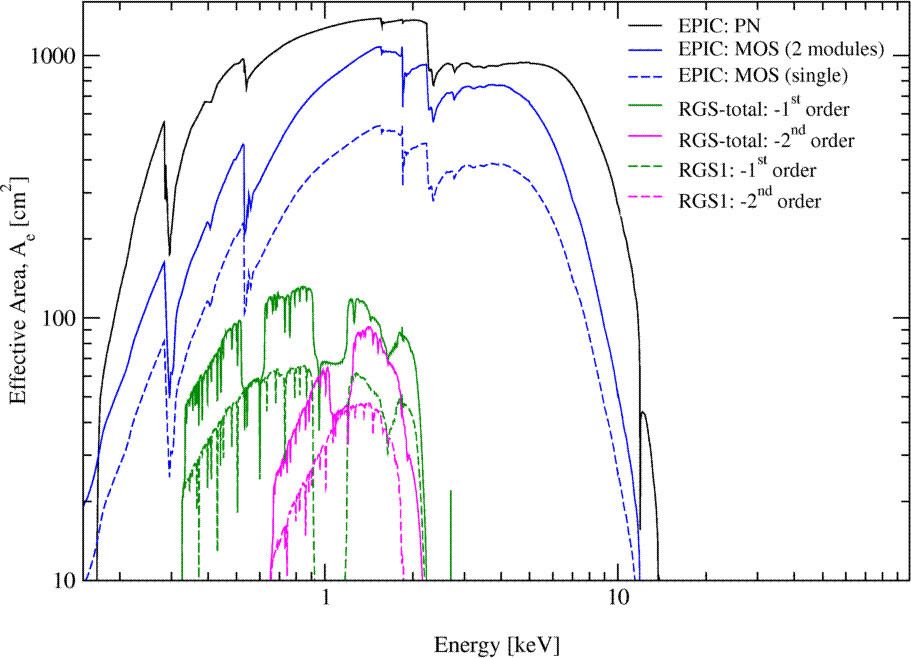Next: 3.2.2.2 Off-axis effective area Up: 3.2.2 X-ray effective area Previous: 3.2.2 X-ray effective area
The most important information to XMM-Newton users is the mirror effective area,
folded through the response of the different focal instruments. These are
shown in Figs. 11 and 12.
The effective areas have been extracted from the ready-made EPIC response
matrices (full-frame mode, thin filter) and from response matrices
created with the SAS task rgsrmfgen in case of the RGS's. Being the
product of the effective area of the X-ray telescopes and the quantum
efficiency of the detectors ( ), they correspond to the
open filter positions (cf. Figs. 29,
30 and 31 for
effective area plots of the EPIC cameras in case of other filter
positions).
), they correspond to the
open filter positions (cf. Figs. 29,
30 and 31 for
effective area plots of the EPIC cameras in case of other filter
positions).
One can see that the XMM-Newton mirrors are most efficient in the energy range from 0.1 to 10 keV, with a maximum at about 1.5 keV and a pronounced edge near 2 keV (the Au M edge). The effective areas of the two MOS cameras are lower than that of the pn, because only part of the incoming radiation falls onto these detectors, which are partially obscured by the RGAs (Fig. 3).
 |
European Space Agency - XMM-Newton Science Operations Centre